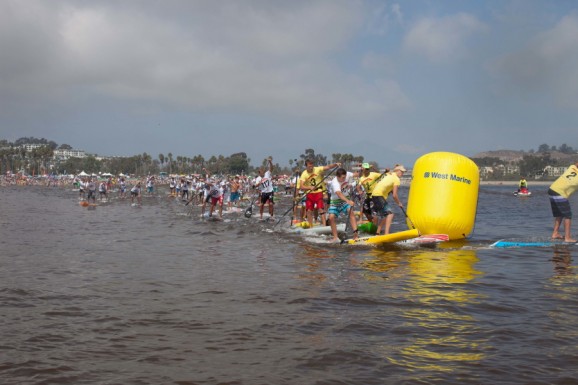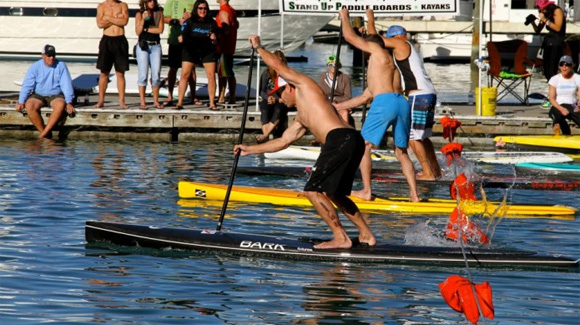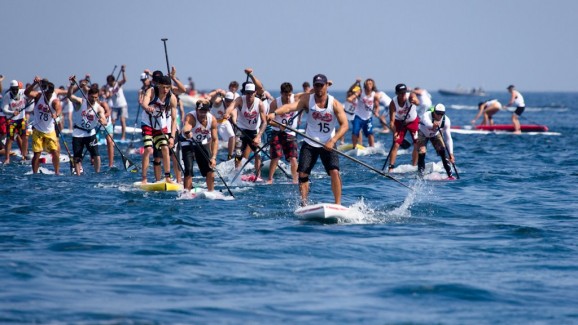
Jim Terrell: How Do We Make SUP Bigger and Better?
We have all witnessed this great sport of Stand Up Paddling quickly evolve in recent years and it’s amazing to now see over 500 SUP events this year.
SUP boasts a wide variety of disciplines: flat water sprint races, whitewater races, long distance marathons, Battle of the Paddle-style surf races, downwinders, SUP surf contests and several others in between.
In many ways I think we can compare competitive Stand Up Paddling to competitive bicycling, where you also have several different disciplines (stage races, criterium, mountain biking, velodrome racing, BMX, stunt bikes, etc…).
But while bicycling has had decades to fine tune their event formats and attract the big crowds, TV audiences and sponsorship dollars, our young sport of Stand Up Paddling is still trying to find its feet. So it’ll be really interesting to see which type of SUP events and race formats eventually win over the larger crowds, get the most media attention, and ultimately attract the bigger sponsors and number of athletes.
I appreciate that SUP has roots in ancient cultures far removed from the commercialisation of modern sports and that many paddlers just want to enjoy spending time out on the water. However I believe this is a really important debate that we need to have sooner or later, one that will greatly impact the future growth of our sport.
If you look at the Olympic Games, you’ll see they’ve had to evolve and adopt new sports along the way in order to compete with other global sporting events and maintain their relevancy. The bottom line is that sports are a commodity like any other; there is a supply (sports played) and demand (people who want to watch them and sponsors who want to support them).
In the future we may find that some of the Stand Up Paddling disciplines and race formats that are fun to participate in aren’t so fun to watch for anyone who isn’t a hardcore paddler themselves.
Racing down huge river rapids on a SUP might not be for the “average paddler”, but it’s probably going to be really entertaining for the average sports fan watching on TV or on the net.
With SUP sprint racing, the shorter distances (around 200m) keep races under one minute and closer to the average attention span of most people.
This is similar to how the 100m and 200m races are the most popular track & field events for most viewers, or how the C1 200m Canoe Sprints are generally the most entertaining races for non-canoeists.
The action is faster and the races are over quicker.
I also feel Stand Up Paddling has some unique advantages that can help attract a wider audience and bigger growth into the future:
#1. Our sport is “user friendly”. Almost anyone can learn to paddle on their first day if the conditions are calm. I’ve taught both my four year old daughter and 70 year old mother-in-law to SUP in under 10 minutes. This kind of thing makes our sport more accessible to a wider audience.
Though I think it’s also another reason we should consider additional specs (apart from a max length) for stock boards. This could keep the sport somewhat “user friendly” and not make it totally inaccessible (at least in the stock class, which may become the entry point into racing for newer paddlers).
#2. There’s a lot of visibility with our athletes. The whole body is exposed when you’re paddling which means you can really see our athletes in action. This needs to be taken advantage of.
#3. Modern Stand Up Paddling has strong surfing roots and surfing is a sport that’s considered fairly cool by the average sports fan. Despite any current tensions between shortboarders and SUP’ers, most people driving round in their car with a SUP board on the roof probably enjoy the fact it looks like a surfboard.
Plus your average joe who lives miles from the ocean can paddle a SUP and it’ll be the closest thing they may ever get to surfing. So I think it’s really important we have some specs (or just simple principles) that keep SUP “boards” looking like boards and not like “stand up canoes and kayaks”, to protect SUP’s assocation with surfing and keep it as a cool-looking sport.
Whether all this translates into more athletes competing in SUP races, more crowds at the beach, more paddling on TV and more viewers on the webcasts is still yet to be seen. Though either way, it’s exciting just to be part of a sport as it evolves so quickly and as we see so much experimentation with new race formats and disciplines.
But this is just what I think. I’d love to hear your thoughts on the future of Stand Up Paddling.
– What will the format for SUP races look like in 10 years?
– What type of events will we see on TV?
– Which races will attract the most competitors or get the biggest numbers watching their webcasts?
Leave a comment in the box below if you want to join in the debate.
Cheers!
– Jim







